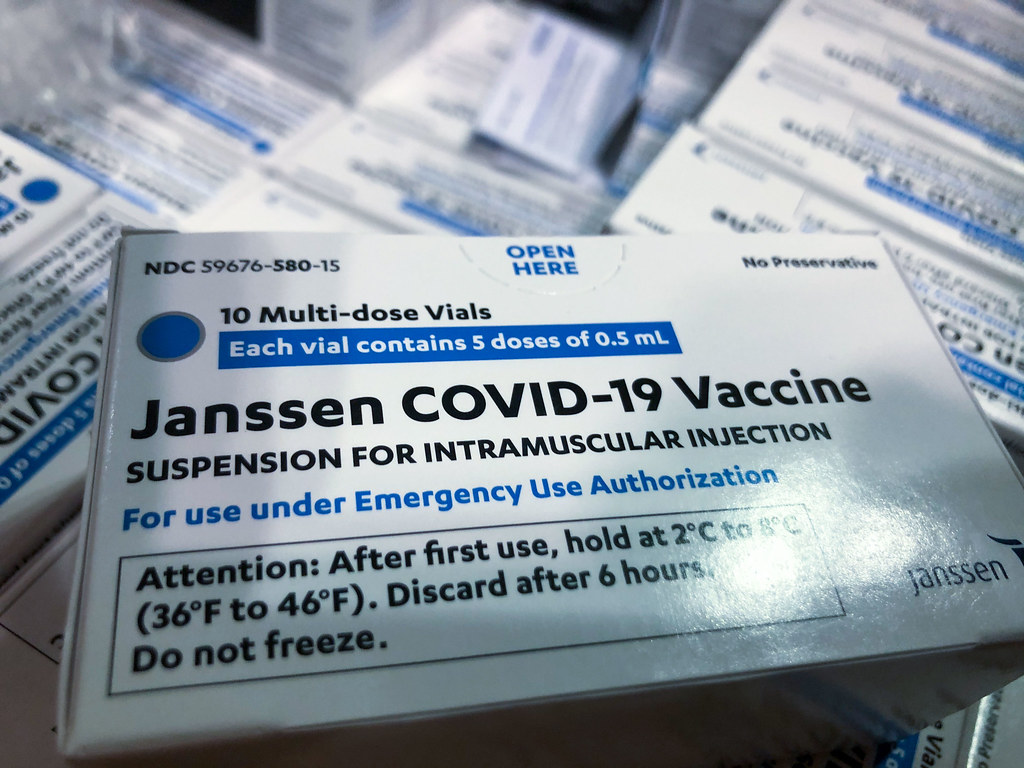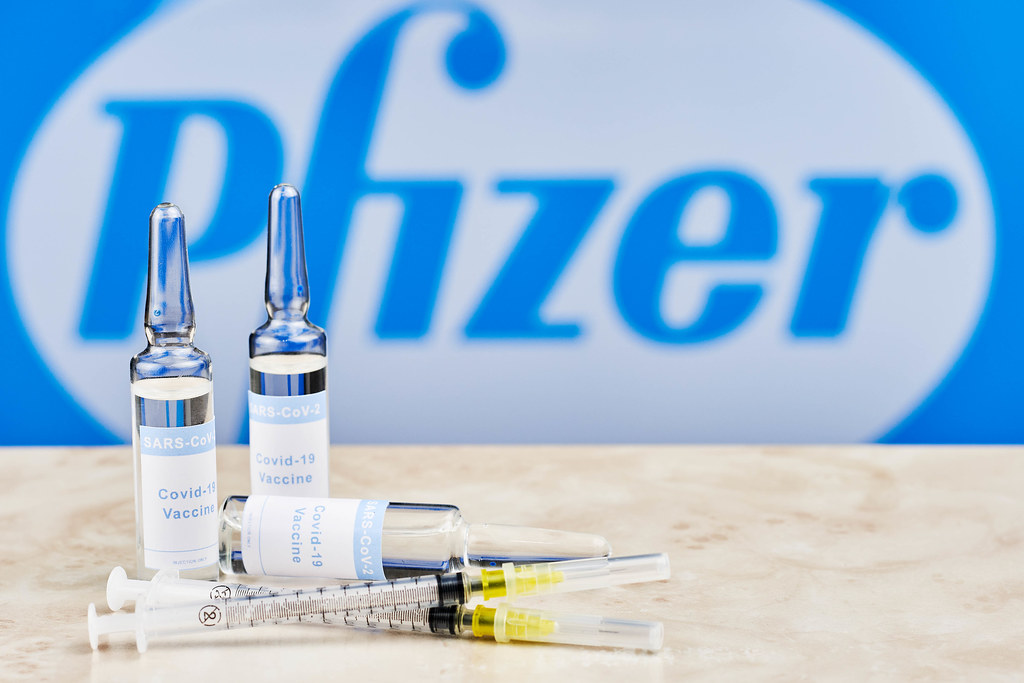In March 2020, the World Health Organization (WHO) declared SARS-CoV-2, which started as an infection in the rich cultural district of Wuhan in China, a pandemic that causes the novel coronavirus disease 2019 (COVID-19). By April 2020, around 1,844,683 confirmed cases of COVID-19 with 117,021 deaths from at least 213 nations, areas and territories were reported. The numbers baffled the world as the numbers start to increase by each day. The scientific fraternity has been working days and nights since the pandemic began and thanks to their efforts, the people breathe a sigh of relief after getting the doses of the COVID-19 vaccines that are presently in development and distribution around the world. Two such prominent vaccine candidates that have shown promising results in their corresponding vaccine trials are Pfizer-BioNtech vaccine and the Johnson & Johnson vaccine.

What is Johnson & Johnson Vaccine?
On February 27, 2021, the FDA gave green light to the emergency use of the single-dose vaccine, developed by the Johnson & Johnson-owned Janssen Pharmaceuticals, to curb the present COVID-19 infection targeting individuals of all age groups. The vaccine has been approved for emergency use (EUA) in the United States for use in individuals aged 18 years and over. The scientists in Johnson & Johnson started working on developing a vaccine as soon as the pandemic hit the concerning mark and in a few months, announced a lead investigational vaccine candidate. To further accelerate the vaccine access, Johnson & Johnson partnered with the German science and technology giant Merck to enhance the production capacity of the newly approved coronavirus vaccine. With this step, the Johnson & Johnson vaccine became the third vaccine candidate to fight off the current pandemic in the U.S. Unlike the other two vaccines, the Janssen vaccine is a single-dose vaccine which requires only one dose.

What is Pfizer Vaccine?
The Pfizer-BioNTech coronavirus vaccine is one of the first few vaccines to be approved for emergency use in the United States. The vaccine was developed by the American pharmaceutical company Pfizer in collaboration with its German partner, BioNTech. The Pfizer vaccine is believed to be highly effective against hospitalization and deaths, and is already approved for active immunization under an Emergency Use Authorization (EUA) to put a stop on the spread of the virus. Well, the vaccine is said to have an efficacy rate of nearly 95%, but the vaccine came in the time when no other variants of the virus were reported, which raises a slight concern regarding its effectiveness in the present scenario. Unlike the Janssen vaccine, Pfizer is a mRNA vaccine, a leading technology for vaccine development in modern day biological sciences. It is reportedly 95% effective in patients after receiving both the doses.
Difference between Johnson & Johnson and Pfizer
Technology involved in the making of Johnson & Johnson vs Pfizer
– The Janssen vaccine, developed by the Johnson & Johnson-owned Janssen Pharmaceuticals, uses the company’s proprietary AdVac vaccine technology, the same technology that was used in the making of transformational vaccines for the prevention and treatment of some of the most infectious diseases of our time, such as Ebola, RSV, HIV and Zika. It uses the viral vector technology, which uses an adenovirus – the virus which tends to cause minor infections such as common cold – but it’s modified so that it cannot make you sick, cannot replicate and cannot integrate into your DNA. When injected, the adenovirus carrying the genetic code of the SARS-CoV-2 virus enters into your cell and creates spike proteins which in turn go to the surface of your cells, prompting your immune system to recognize it and start making antibodies to it.
The Pfizer-BioNTech vaccine is a leading vaccine candidate based on the cutting-edge mRNA vaccine technology which is also the powerful technology behind the Moderna vaccine. So, the vaccine uses only one part of the SARS-CoV-2 virus, known as the spike protein, which is also one of the most defining features of the virus. The spike protein is exactly what allows the coronavirus to enter your cells. It’s pretty harmless when injected into your body, but it still treats the virus as a foreign object and launches an immune response to fight off the virus.
Efficacy comparison between Johnson & Johnson Vs. Pfizer
– The Pfizer vaccine showed promising results during the clinical trials and based on the reports suggesting individuals after receiving both the doses of the vaccine showed an efficacy of over 90%. However, with the new variants of the virus in play, the efficacy of the vaccine has been reduced marginally. But the vaccine reportedly gives recipients remarkably greater levels of protection, providing at least a 90% chance of protection against the virus in real-world settings.
Earlier in Jan. 2021, Janssen released their preliminary findings based on the data gathered from their phase 3 clinical trials on the new vaccine candidate. According to the data, the one-shot vaccine showed an overall efficacy of 66.3% at preventing the infection in people with no prior evidence of infection two weeks after receiving the dose, which is great, considering the vaccine trials were conducted during the time when other variants of the novel coronavirus had been identified.
Johnson & Johnson vs. Pfizer Vaccine: Comparison Chart

Summary
While both Janssen vaccine and Pfizer are leading vaccine candidates in the current vaccine race to put a stop to the ongoing COVID-19 pandemic, the question remains as to which vaccine is more effective against the infection and which one should you take. The Janssen vaccine seems to have an upper hand here, simply because their trials were conducted during the time when many new and threatening variants of the coronavirus had been identified. So, even if the vaccine showed an efficacy of 66.3% in the current scenario and almost 85% in the real world against hospitalization, the results are very promising compared to what Pfizer and other mRNA based vaccines have claimed.
- Difference Between Caucus and Primary - June 18, 2024
- Difference Between PPO and POS - May 30, 2024
- Difference Between RFID and NFC - May 28, 2024

